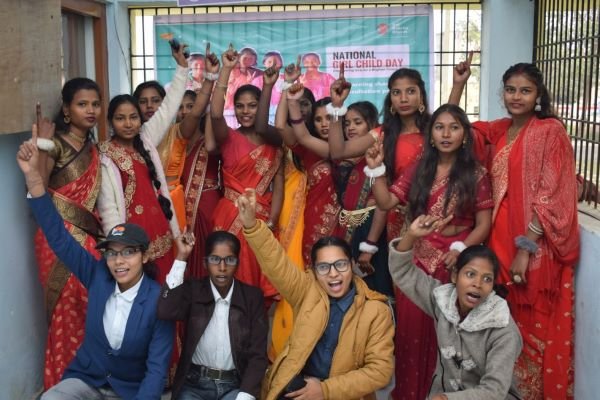OPINION
ECONOMIC REFORMS & TRANSFORMATION OF RURAL INDIA
Rapid agriculture growth and rapid rural employment growth were always the focus of India’s policy makers. Mahatma Gandhi envisaged India as a Nation of self-sufficient autonomous village republics. Land – the summum bonum of rural existence, and agricultural structure was the most important determinant of India’s development. Highly skewed distribution of land was responsible for agricultural backwardness. As land was the critical income generating asset of rural India, changes in agricultural holding structures were necessary to ensure prosperity of the rural population.
Accordingly, India’s State policy focused on State Governments formulating and implementing Land Reforms legislations. These included the Land Ceiling Act, the Tenancy Act, the Land Revenue Act and broadly adopted the land to the tiller policy. Surplus arable government lands were distributed to the poor and needy peasants for livelihoods. These policies were envisaged to promote agricultural growth and alleviate rural poverty. After the bank nationalization in July 1969, a big push was given towards expansion of banking activities. Rapid expansion of bank branch network into rural areas and expansion of bank credit to agriculture and related activities. Priority sector lending targets and interest rates were introduced as part of a social banking approach. The rural bank branch expansion significantly lowered the rural poverty and increased nonagricultural growth. However, as time progressed, divergences emerged between the levels of development in States. The richer and faster growing States were better at reducing rural poverty while growth was volatile in the poorer States. The faster growing States had formulated laws for amalgamation of farm holdings into viable units for investments, productivity and growth. In the poorer States, the alienation of small and marginal farmers from their lands and subsequent conversion to landless agricultural labor made them entirely dependent on the vagaries of the market. Large scale labor migration was witnessed in areas where rainfed agriculture practices were prevalent. The richer States also attracted higher investments and had better infrastructural development which resulted in higher per capita incomes as compared to the poorer States.
It was in this backdrop that the Indian State implemented a series of welfare programs for the rural population. These included the Desert Development Program, the Drought Prone Area Development Program and the Watershed Development Program. These programs were taken up in a decentralized participatory developmental model. The objective was to treat vast stretches of land areas with watershed treatment practices including construction of check dams, development of pastures and promotion of improved animal husbandry practices. A second crop in rain-fed areas, essentially meant higher farm incomes and lower migration of farm labor.
The Indian State also implemented several major direct beneficiary programs for asset generation, skill development, residential housing and employment generation. The Department of Rural Development implements the major schemes of National Rurban Mission, Pradhan Mantri Awas Yojana (PMAY), Pradhan Mantri Gram Sadak Yojana (PMGSY), the Deen Dayal Upadhyaya Grameen Kaushalya Yojana (DDU GKY) and the Mahatma Gandhi National Rural Employment Guarantee Act (MGNREGA) programs. The implementation of the MGNREGA on a pan India basis with assured employment on individual and community based programs has resulted in significant employment and asset generation in rural areas.
The National Rurban Mission was launched in February 2016 as a new initiative for development of a cluster of villages that preserve and nurture the essence of rural community life with focus on equity and inclusiveness without compromising with the facilities perceived to be essentially urban in nature. The DDU GKY essentially focused on youth between 15 years and 35 years from poor families, is tasked with the objective of adding diversity to the incomes of rural poor families and caters to the career aspirations of the rural youth.
Indian farmers were always concerned about the availability of adequate credit at reasonable cost in a timely manner. One of the major steps forward in this direction was financial inclusion. The Pradhan Mantri Jan Dhan Yojana represents the National Mission for Financial Inclusion to ensure access to financial services. The Jan Dhan Yojana provided the bankers with the necessary confidence to promote credit culture across the deprived population and resulted in significant increases in credit flows to rural sector.
A Nation of India’s size requires significant increases in food production. The year 2016-17 witnessed the highest ever food grain production of 273.38 million tons which is 6.37 percent higher than the last 5 years average production and 8.6 percent higher than 2015-16. Government introduced the Soil Health Card Scheme (SHC) in 2015 to be issued on a bi-annual basis to all land holders of the country with the objective to conduct farm level soil analysis. In July 2015, Government introduced the National Agricultural Market (E-NAM) to link 585 wholesale agriculture production marketing committees across the country through a common e-platform. The portal has been made available in several Indian languages and has empowered the farmers with vast information dissemination. The State continued to make rapid strides in the implementation of the Pradhan Mantri Fasal Bima Yojana and the Pradhan Mantri Krishi Sinchayee Yojana covering all risks of the crop cycle and providing incentives for improved irrigation practices.
The Government’s initiatives for empowering the farmers and improving the infrastructure at the village level have been largely successful in reducing poverty and enhancing education and health care indicators. The improvement in farm incomes and the transparency in subsidy transfers would enable the creation of a 21st century India that is dynamic and forward looking.

































